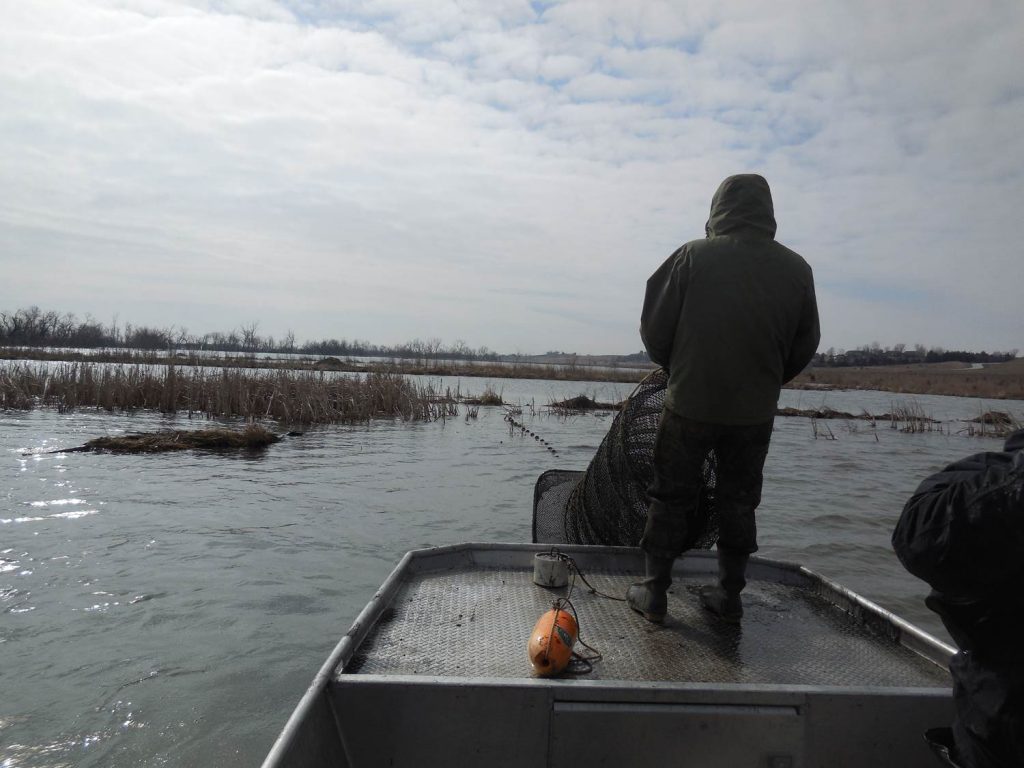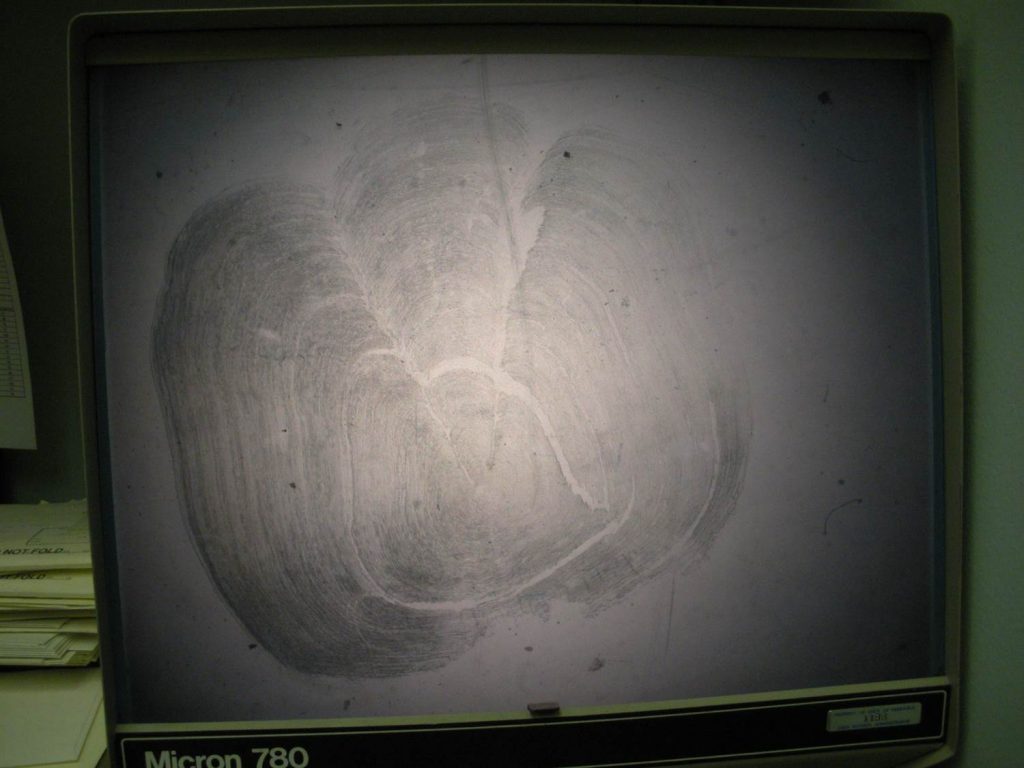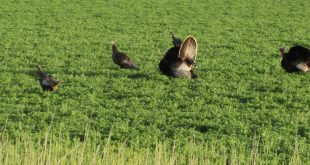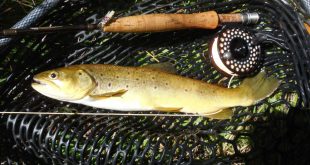Every season there is something going on if you are a fisheries biologist. I would not say that there is any “down time”. However, I would say that spring and then fall it is particularly busy. Right now, Nebraska’s fisheries biologists are on the water sampling fish populations on a variety of waters across the state.
Nebraska’s fisheries biologists conduct what we call “standard surveys”. Those are fish population surveys that are carried out according to standardized, scientific methods in order to reduce variability and collect the best data possible. That information is invaluable in the management of the state’s fish populations, and in my opinion collecting it is one of most important, if not THE most important job we do. The fisheries data collected from a variety of waters this fall will give us a good idea of the health of our fish populations and an indication of how our fisheries management activities, things like fish stocking and harvest regulations, are performing.
I would post a link to an old blog post to explain in more detail how the fish population sampling is done. Sorry, I do not have access to that old blog post at this time. If you can, there was an old story in NEBRASKAland magazine that also detailed how our fisheries biologists sample fish populations, “Survey Says” by my buddy Jeff Kurrus back in March of 2011. Since I cannot link you to either one of those references, let me briefly describe how a fisheries “standard survey” is done. . . .
Depending on the target species, a variety of fish collection gear is employed. Boat electrofishing is the most effective gear for collecting Largemouth and Smallmouth Bass. Frame nets, trap nets or fyke nets, call them what you want, are used for collecting species like Crappies and Bluegills. Gill nets are best for open-water species like Walleyes, White Bass, Wipers and Channel Catfish. On some waters, all of those gears will be used during a “standard survey”. On other waters, the habitat and species present mean fewer collection gears will be necessary. Those gears are used in the same manner at the same locations every time a standard survey is done on a particular water body.
We try to sample every public body of water in Nebraska as often as possible. Some of our largest, most important fisheries will be sampled every year while others will be sampled once every two to five years. The results from any one given year are a good index of the health of various fish populations, but the real utility of standard survey data comes as surveys are repeated over time. Several years of data will track changes in fish communities and are much more valuable than just one “snap-shot” in time.
If you want an example of how that standard survey data is used, be sure to check out our Fish Sampling Reports. I must add that the standard survey data also is exactly what is used for our annual Fishing Forecasts–information that is invaluable to every Nebraska angler (the 2017 version will be available soon after the first of the year!).
 Fisheries biologists will handle hundreds if not thousands of fish during a standard survey on a body of water. The number of fish caught per net or per hour of electrofishing is one important thing that is collected during a standard survey. Biologists will also measure most, if not all fish collected, and weigh most of them as well. Scales or spines will be collected from a sub-sample of fish to be used for aging of the fish and calculation of growth rates (How Old?).
Fisheries biologists will handle hundreds if not thousands of fish during a standard survey on a body of water. The number of fish caught per net or per hour of electrofishing is one important thing that is collected during a standard survey. Biologists will also measure most, if not all fish collected, and weigh most of them as well. Scales or spines will be collected from a sub-sample of fish to be used for aging of the fish and calculation of growth rates (How Old?).
One might assume that fisheries biologists see some really big fish while conducting standard surveys. Yes, we do at times, but not nearly as many as you might think. Our goal while doing a standard survey is to collect a representative sample of fish in a population. Yes, we are interested in what lunkers are present, but the presence of small fish is just as important and we would like to sample all fish in a population in proportion to their actual abundance. We do NOT go out just trying to catch the biggest fish we can.
In fact, anglers very much do select for big fish; anglers do try to catch the biggest fish they can. As a result, anglers as a group will see more big fish than fisheries biologists do while sampling fish populations.
However, while doing field work, we certainly do get our hands on some really nice fish from time to time. For example, this beautiful Blue Catfish:
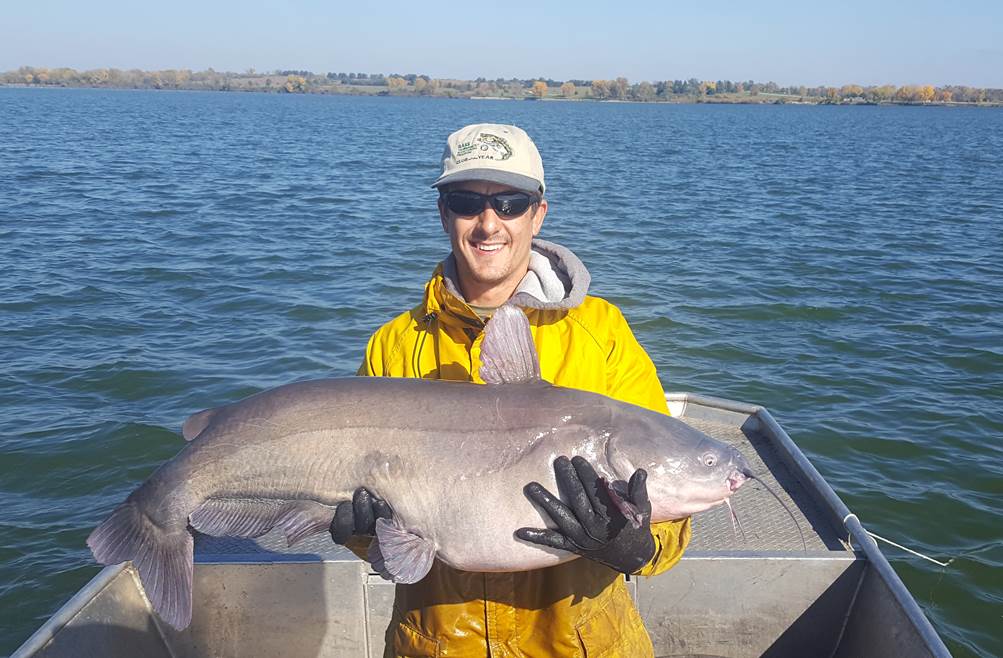
That fish was just shy of 40 pounds and was released right after capture. Where? If you cannot tell by looking at the background, it was mentioned in the 2016 Fishing Forecast. Oh, by the way, those big Blues are very catchable in the fall, even right now!
 Nebraskaland Magazine
Nebraskaland Magazine
